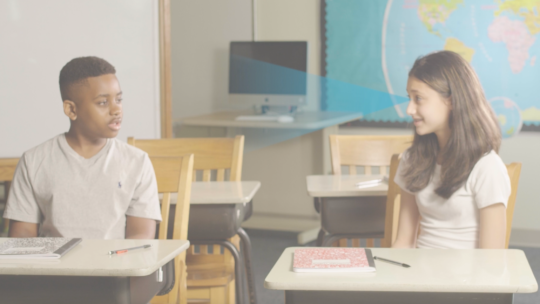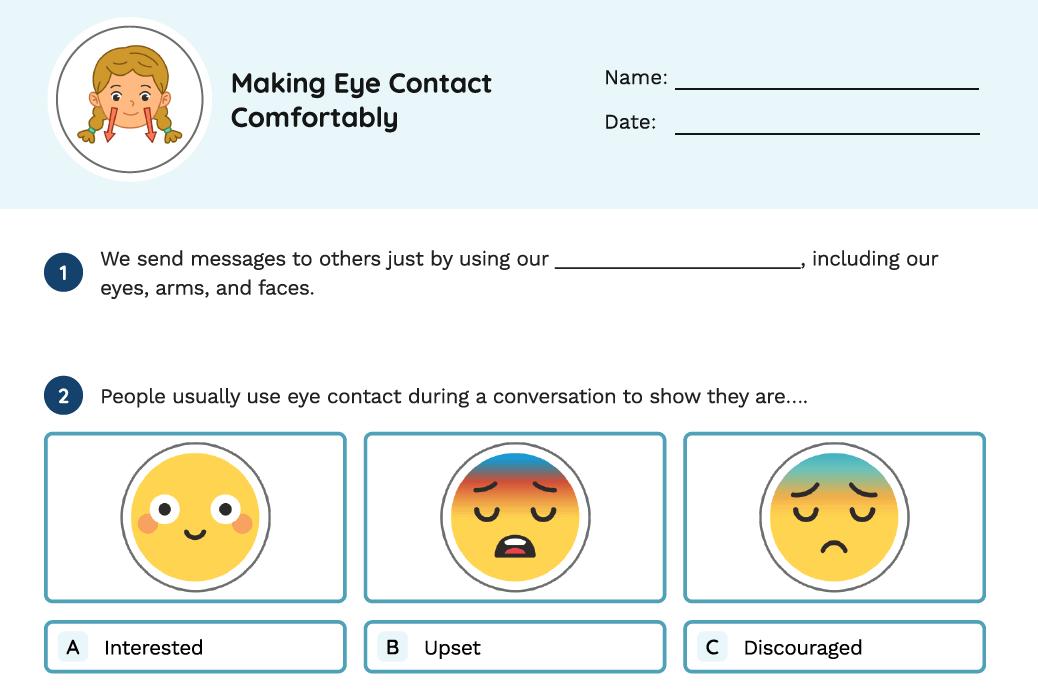Welcome back, Iris here. Today we are covering nonverbal communication.
Do you remember the last time you or a conversation partner communicated using primarily non-speaking methods? Maybe you lost your voice for a period of time or you went on a weekend trip with a friend who had taken a temporary vow of silence.
Our friends who use Augmentative Alternative Communication (AAC) or are a part of the deaf community know the richness of communicating and connecting without spoken words.
Nonverbal communication encompasses a wide range of facial expressions, postures, gestures, and body language. It also includes reading others’ social cues and providing comfortable physical proximity. Much of the aforementioned is influenced at least in part by culture, family, individual background, and neurodivergence.
Let’s jump into our lesson to learn more!
Materials I Use:
How I Teach Nonverbal Communication:
To support neurodiverse learners, Everyday Speech has updated several videos within the Social Communication Curriculum.
The Making Eye Contact Comfortably video encourages learners to use strategies like visual referencing in place of traditional eye contact to fit their comfort levels and sensory needs. This replaces the traditional focus on maintaining eye contact, which may be uncomfortable and harmful for some learners.
Visual referencing includes:
- Taking breaks
- Looking in a person’s general direction instead of at their face and eyes
Get more FREE videos, worksheets, and games in your inbox every week!
{{cta(‘fd8288a5-6235-4b83-b24a-d6b7c104bfaa’,’justifycenter’)}}
The video covers what occasional social referencing looks like and ways it can help communicators stay true to themselves.
When we feel comfortable communicating authentically and comfortably, it’s more likely that our listeners will get to know the real us.
After you watch and discuss the video, share this companion worksheet, which reinforces strategies to use in place of traditional eye contact.
By learning each others’ nonverbal communication preferences, we can work towards a more inclusive society.
As educators and clinicians, our teaching and goals should evolve alongside our learners, who are always growing in their understanding of who they are and who they want to be. What an exciting time!
Key Takeaways:
Using tools that help us feel most comfortable, both for ourselves and our learners, will help us create comfortable, sustainable relationships and allow others to see our authentic selves.
Sign up for a free 30-day trial of Everyday Speech’s Social Communication Curriculum for more no-prep videos, extension activities, and more!
{{cta(‘df2570d0-50ab-4151-b34d-203ec1f69ab3’)}}
About the Author:
Iris Wong joined Everyday Speech as a contributor in 2021. Over the last decade, she has been a Speech Language Pathologist in PreK-12 public schools, private practice, international schools and community health based early intervention. She currently lives in the San Francisco Bay Area with her husband, two kids and senior dog. Visit her at https://www.linkedin.com/in/iris-l-wong/














